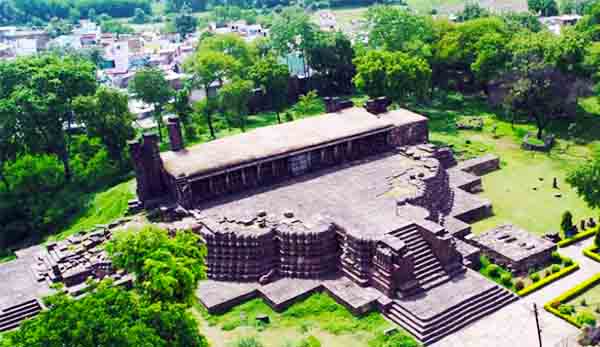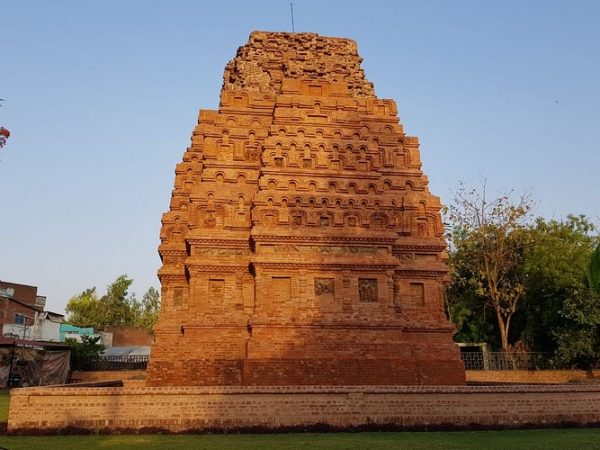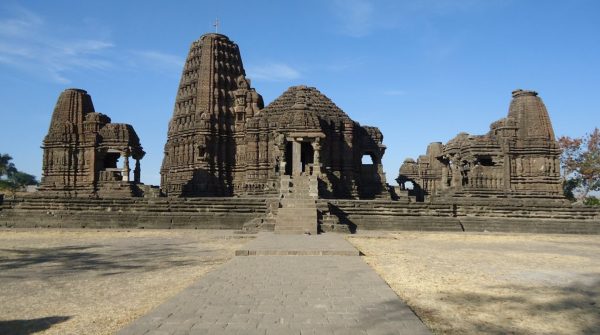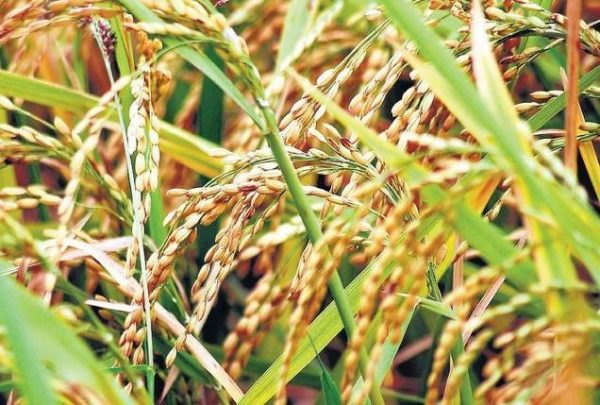Since the ancient times, it has been the practice of Hindu kings to assiduously follow the tenets as laid down in the Shilpa Shastra while building forts, palaces, mansions, temples and dharmashalas. Traditionally, these grand structures were built along river banks, seashores or lakes to observe the obligatory rites and rituals of the Hindu scriptures. ... Continue Reading →
History of the Prachin Shiv Mandir at Agra – Part I (The Myth of the Taj Mahal)
Lazy and uninformed "historians" of Indian (commissioned by the British Raj) and British origin have done an outstanding job for over three centuries to whitewash our glorious Hindu heritage and relegate the contributions of our valorous Hindu kings to obscurity. A concerted effort to prevent one from learning about Hinduism, the oldest civilization in the... Continue Reading →
Bija Mandal, Vidisha, Madhya Pradesh
A magnificent edifice of the Chaulukya dynasty or Solanki dynasty of Gujarat and the Paramara dynasty that ruled over Madhya Pradesh is the Bija Mandal or Vijaya Mandir. Some historical documents suggest that the foundation of this temple was laid by one Vachaspati, probably the Pant Pradhan of the Chaulukya dynasty and then finished by... Continue Reading →
Lakshmi Narayan Temple Group, Chandpur Village, Lalitpur District, Uttar Pradesh
The largest group of temples in the historical site of Chandpur – Jahajpura is Lakshmi Narayan. Considered by historians, archaeologists, artists and architects to be one of the finest examples of the engineering, artistic and architectural prowess of the Chandelas, this group of temples though completely in ruins today still manages to exude the charm,... Continue Reading →
Belmori Temple Group, Chandpur Village, Lalitpur District, Uttar Pradesh
Chandpur – Jahajpura is an excellent historical and archaeological site to appreciate some of the finest architecture of the Chandelas built between the 9th - 12th century. This remote village literally in the middle of nowhere has countless damaged sculptures, carved stones, decorative panels and ruins of bathing ghats, halls and temples in the east... Continue Reading →
Sahastralingeshwar Temple Group, Chandpur Village, Lalitpur District, Uttar Pradesh
Another beautiful example of the artistic, architectural and sculptural perfection of the Chandelas is the Sahastralingeshwar Temple Group in the revered site of Chandpur – Jahajpura. Chandpur – Jahajpura now in ruins was perhaps one of the most important seats of power of the Chandelas between the 9th - 12th century. The majestic Sahastralingeshwar... Continue Reading →
Varaha Temple Group, Chandpur Village, Lalitpur District, Uttar Pradesh
Chandpur - Jahajpura is revered by historians, archaeologists, architects and artists for its exemplary artefacts dating back to the 9th - 12th century. This heritage site is a fine example of the architectural, artistic and engineering prowess of the Chandelas. The east and north-west parts of this complex in particular have innumerable broken sculptures, architectural... Continue Reading →
Bhandaria Temple, Chandpur Village, Lalitpur District, Uttar Pradesh
Chandpur - Jahajpura located near the Betwa River is a lesser-known treasure trove of ancient temples of the 9th - 12th century built by the Chandelas. This magnificent heritage site has five groups of temples along with a number of independent temples built over three centuries. The five groups are the Sahastralingeshwar Temple, Varaha... Continue Reading →
Surya Temple, Chhatarpur, Madhya Pradesh
The temples, halls, dharmashalas and tanks built by the Chandelas across North India is an excellent example of their architectural grandeur, engineering precision and sculptural beauty. The Chandelas were a devout dynasty who took great pride in abiding by the age-old wisdom and tenets laid down in the Hindu texts. Every building they designed conformed to... Continue Reading →
Makarbai Temple, Makarbai Village, Mahoba District, Uttar Pradesh
The architectural brilliance, engineering ingenuity and artistic excellence of the Chandelas is best appreciated in their capital city of Mahoba. Their contribution to art, sculpture, architecture and literature is expressed in their unique style, technique, structural features and design elements in every edifice they built in Mahoba, Kalinjar, Ajaigarh and Khajuraho. It is greatly... Continue Reading →
Sun Temple, Budhni Narhat Village, Mahroni Tehsil, Lalitpur District, Uttar Pradesh
The Chandelas of Jejakabhukti are considered by archaeologists, architects, artists and historians to be one of the best (if not the best) and most prolific builders Akhanda Bharat has ever seen. Their architectural mastery is on full display in Khajuraho, Kalinjar, Ajaigarh and Mahoba which was the capital city. The Chandelas built many spectacular... Continue Reading →
Puneri Pagadi, Maharashtra
Pagadi or turban has historically been a sign of culture, wisdom, virility and often used identify the different sections of community. Puneri pagadi is an inseparable part of Pune which is the cultural capital of Maharashtra. Puneri pagadi is conceptualized from the Peshwe turban worn by the Peshwas which itself was inspired by the traditional Chakribandh... Continue Reading →
Waghya Ghevada, Maharashtra
One of the most famous cash crops of Western Maharashtra is Waghya ghevada. Grown extensively in North Koregaon taluka of Satara district, this rajma was first cultivated in 1950 by the late Kashinath Mahajan who bought seeds of this variety from a trader in Pune. This variety soon became popular with the locals and was... Continue Reading →
Bhitargaon Temple, Bhitargaon, Kanpur District, Uttar Pradesh
One of the finest brick temples of India is the Bhitargaon Temple at Bhitargaon village in Ghatampur tehsil in Kanpur Nagar district. Considered to be the earliest surviving temple built by the Guptas, this architectural masterpiece is constantly in the news for its innovative construction as well as its mysterious background. Though the plan of... Continue Reading →
Anandeshwar Temple, Lasur Village, Amravati District, Maharashtra
One of the most interesting and lesser-known rock temples of Maharashtra is the Anandeshwar Temple at Lasur village in Daryapur taluka in Amravati district. Built on the bank of the Purna River on raised ground, this temple built in black stone looks very much like a fort from a distance. Historical records state that this... Continue Reading →
Roha Fort, Roha Village, Nakhatrana Taluka, Kutch, Gujarat
One of the oldest forts in Gujarat which at its zenith would have been an outstanding example of the grandeur and architecture typical of the Kutch region is the Roha Fort located at a little distance from Bhuj. Standing tall at 800 feet on the Roha hill overlooking the vast town of Roha, this centuries-old... Continue Reading →
Sindhudurg and Ratnagiri Kokum, Maharashtra
Kokum (Garcinia indica) called as the ‘The Kool King’ of Indian fruits flourishes in the dense forests of the Western Ghats of Maharashtra. Konkan kokum is a perennial fruit of commercial value that thrives in the scenic Ratnagiri and Sindhudurg districts. According to the locals, Ratnagiri and Sindhudurg districts have about 43,000 centuries-old kokum... Continue Reading →
Markandeshwar Temple, Chamorshi, Gadchiroli District, Maharashtra
Located at the bank of the sacred Wainganga River in Markanda village in Gadchiroli district, the ancient temple complex of Markandeshwar is popularly called as the 'Khajuraho of Vidarbha'. Titled by historians and architects as the 'Most Picturesque Temple Complex', the iconic Markanda Mahadev Temple is steeped in spirituality, heritage and culture. This temple... Continue Reading →
Gondeshwar Temple, Sinnar, Nashik District, Maharashtra
One of the finest examples of the Hemadpanthi style of architecture is the Gondeshwar Temple at Sinnar. Considered to be the largest, most complete and best preserved medieval temple of the Deccan, Gondeshwar Temple bathed in the golden hue effulgence of the sun at sunrise and sunset is a spectacle to behold! According to... Continue Reading →
Swamimalai Bronze Icons of Tamil Nadu
Shilpa Shastra, broadly classified as the ‘Science of Arts and Crafts’ is the supreme authority on the Chatushashti Kalas (Sixty-four arts) of the universe. The subject of Shilpa Shastra is dealt with at length in the Vedas, Puranas, Agamas and others scriptures and has been assiduously adopted by kings, craftsmen and patrons of art since time immemorial. This highly... Continue Reading →
Wooden Mask of Kushmandi, West Bengal
The quaint village of Mahisbathan in Kushmandi district in the heritage belt of Dakshin Dinajpur is famous for its unique wooden masks. The origin of this craft of mask making is unknown but the stylization, designs and motifs of the masks suggests a deep connection to their religious beliefs. These masks are an intrinsic part... Continue Reading →
Tulaipanji Rice of West Bengal
Dinajpur district in West Bengal is renowned for its indigenous rice diversity finding mention in many important scriptural texts dating back to 1100 CE One of the oldest native varieties found here is Tulaipanji or Tulai that has been cultivated for centuries with traditional methods. Folk songs glorifying this scented rice, its cultivation practices and... Continue Reading →
Lakshmi Janardhana Temple, Debipur, Purba Bardhaman District, West Bengal
One of the finest terracotta temples that has stood the test of time is the Lakshmi Janardhana temple in Debipur village in Burdwan district in West Bengal built around 1844 CE by Narottam Singha, a Zamindar of Debipur. A gigantic arched ornate doorway frames the impressive shikhara and the spectacular terracotta relief work that is... Continue Reading →
Joynagar Moa of West Bengal
The ancient city of Joynagar-Majilpur derives its name from the local goddess and presiding deity, Ma Joychandi and over time, came to be called Joychandinagar and then Joynagar. Joyangar is popularly known as 'the cradle of moa', a unique winter sweet that is placed in high esteem by Bengalis. It is said that the... Continue Reading →























